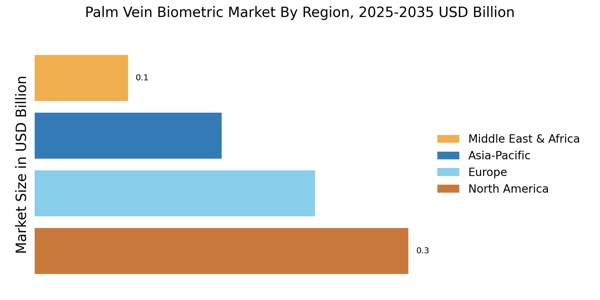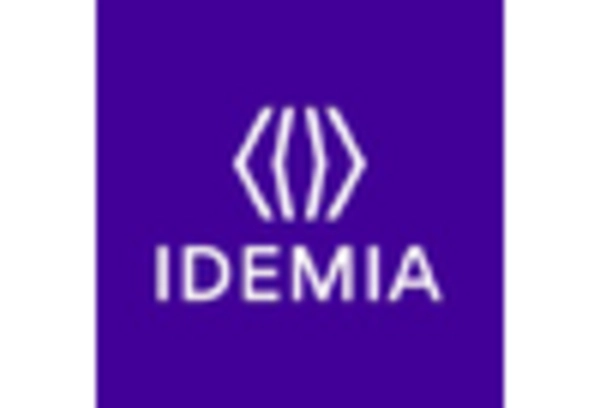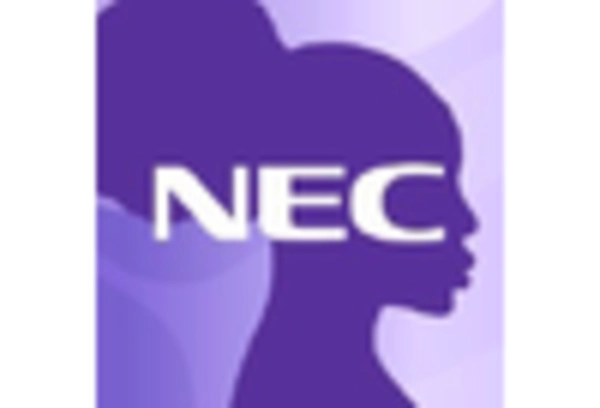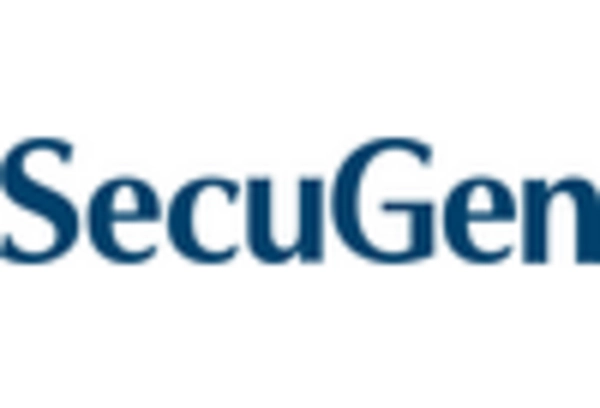Increased Security Concerns
In an era marked by heightened security concerns, the Palm Vein Biometric Market is witnessing a significant uptick in demand for biometric solutions. Organizations are increasingly seeking robust identification methods to combat identity theft and unauthorized access. Palm vein recognition offers a non-intrusive and highly secure means of authentication, as it is difficult to forge or replicate. The market is expected to reach a valuation of USD 1.5 billion by 2026, reflecting a growing recognition of the need for secure access control systems. This trend is particularly evident in sectors such as finance and government, where safeguarding sensitive information is critical.
Growing Adoption in Healthcare Sector
The Palm Vein Biometric Market is seeing a notable increase in adoption within the healthcare sector, where patient identification and data security are paramount. Biometric systems, particularly palm vein recognition, provide a reliable method for ensuring that patients receive the correct treatments and medications. The healthcare industry is projected to account for a significant share of the biometric market, with estimates suggesting it could reach USD 500 million by 2025. This growth is driven by the need for accurate patient identification to prevent medical errors and enhance overall patient safety. As healthcare providers increasingly prioritize data security, the demand for palm vein biometric solutions is likely to rise.
Integration with IoT and Smart Devices
The Palm Vein Biometric Market is poised for growth through the integration of biometric systems with Internet of Things (IoT) and smart devices. As smart technology becomes more prevalent in everyday life, the demand for seamless and secure authentication methods is increasing. Palm vein recognition systems can be integrated into various devices, such as smartphones and smart home systems, providing users with convenient access while ensuring security. This trend is expected to drive market growth, with forecasts indicating a potential market expansion of 15% annually over the next few years. The convergence of biometric technology with IoT is likely to redefine user experiences and enhance security protocols across multiple applications.
Regulatory Support for Biometric Solutions
The Palm Vein Biometric Market is benefiting from favorable regulatory frameworks that promote the adoption of biometric technologies. Governments are increasingly recognizing the importance of secure identification methods in enhancing public safety and streamlining processes. For example, regulations that mandate biometric identification for border control and immigration processes are driving the demand for palm vein systems. This regulatory support is expected to propel the market forward, with projections indicating a market size of USD 1.2 billion by 2025. Such initiatives not only enhance security but also facilitate smoother transactions in various sectors, including travel and healthcare.
Technological Advancements in Palm Vein Biometric Market
The Palm Vein Biometric Market is experiencing a surge in technological advancements that enhance the accuracy and efficiency of biometric systems. Innovations such as high-resolution imaging and advanced algorithms are being integrated into palm vein recognition systems, leading to improved performance. For instance, the introduction of machine learning techniques allows for better pattern recognition, which is crucial for distinguishing between similar vein patterns. As a result, the market is projected to grow at a compound annual growth rate (CAGR) of approximately 20% over the next five years. This growth is driven by the increasing adoption of biometric systems across various sectors, including banking, healthcare, and security, where reliable identification is paramount.

















Leave a Comment